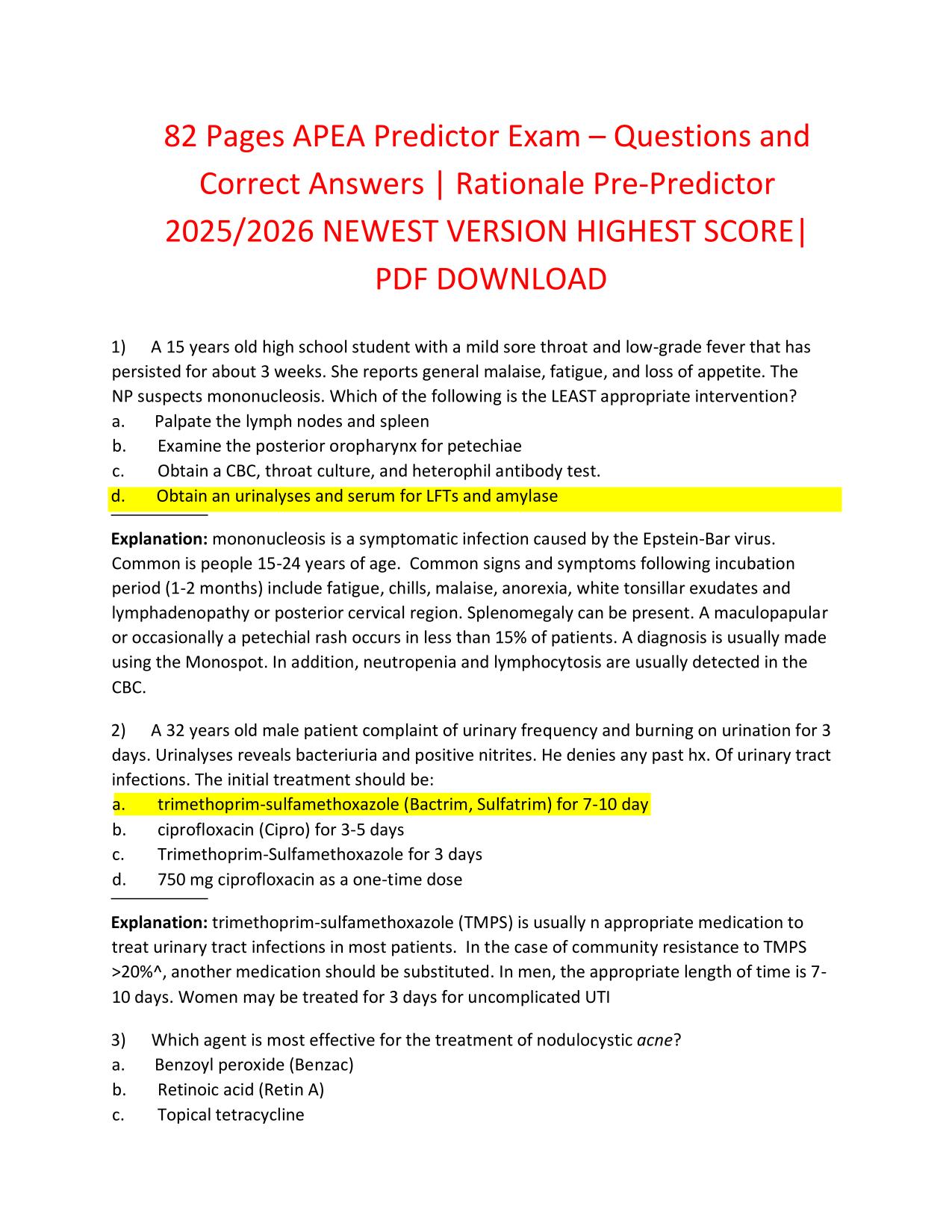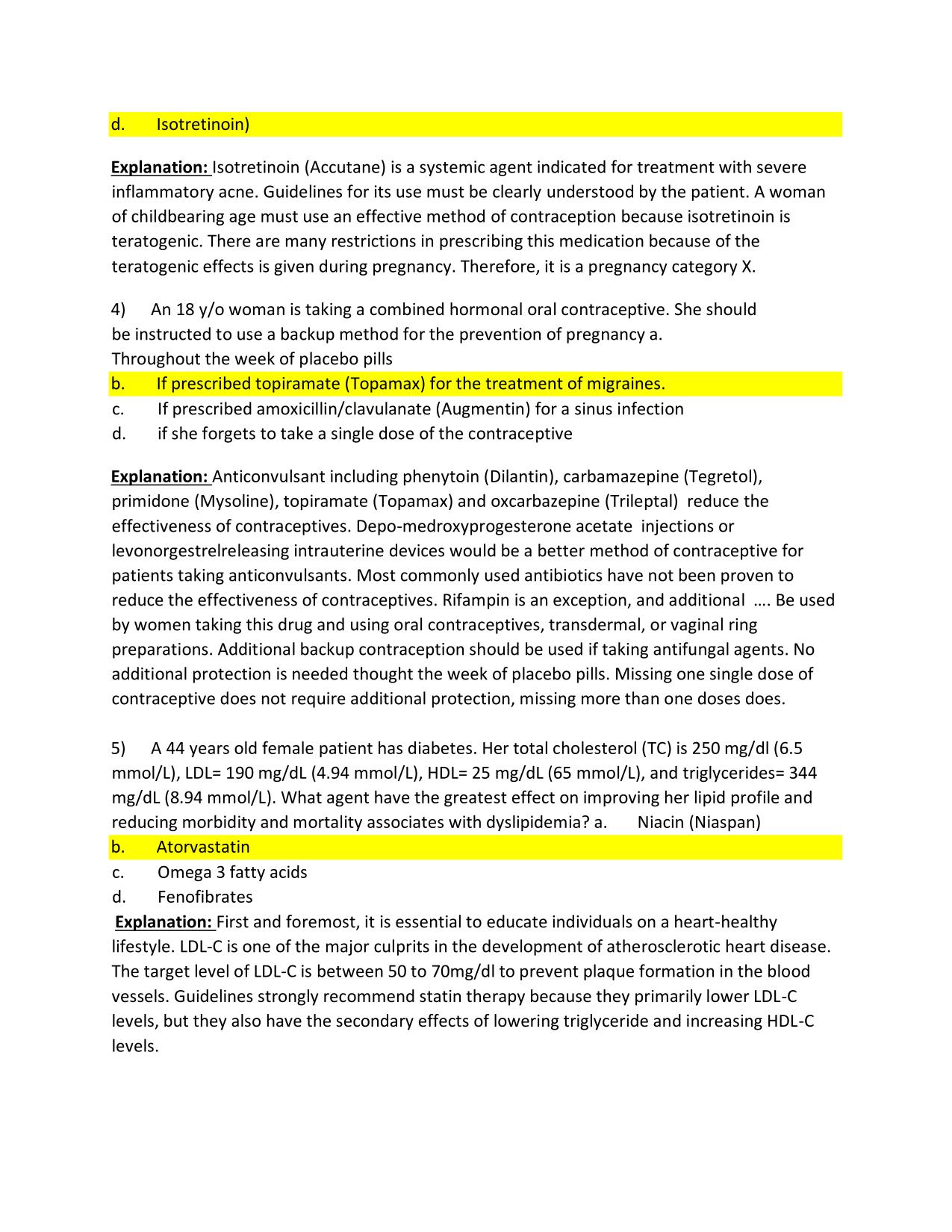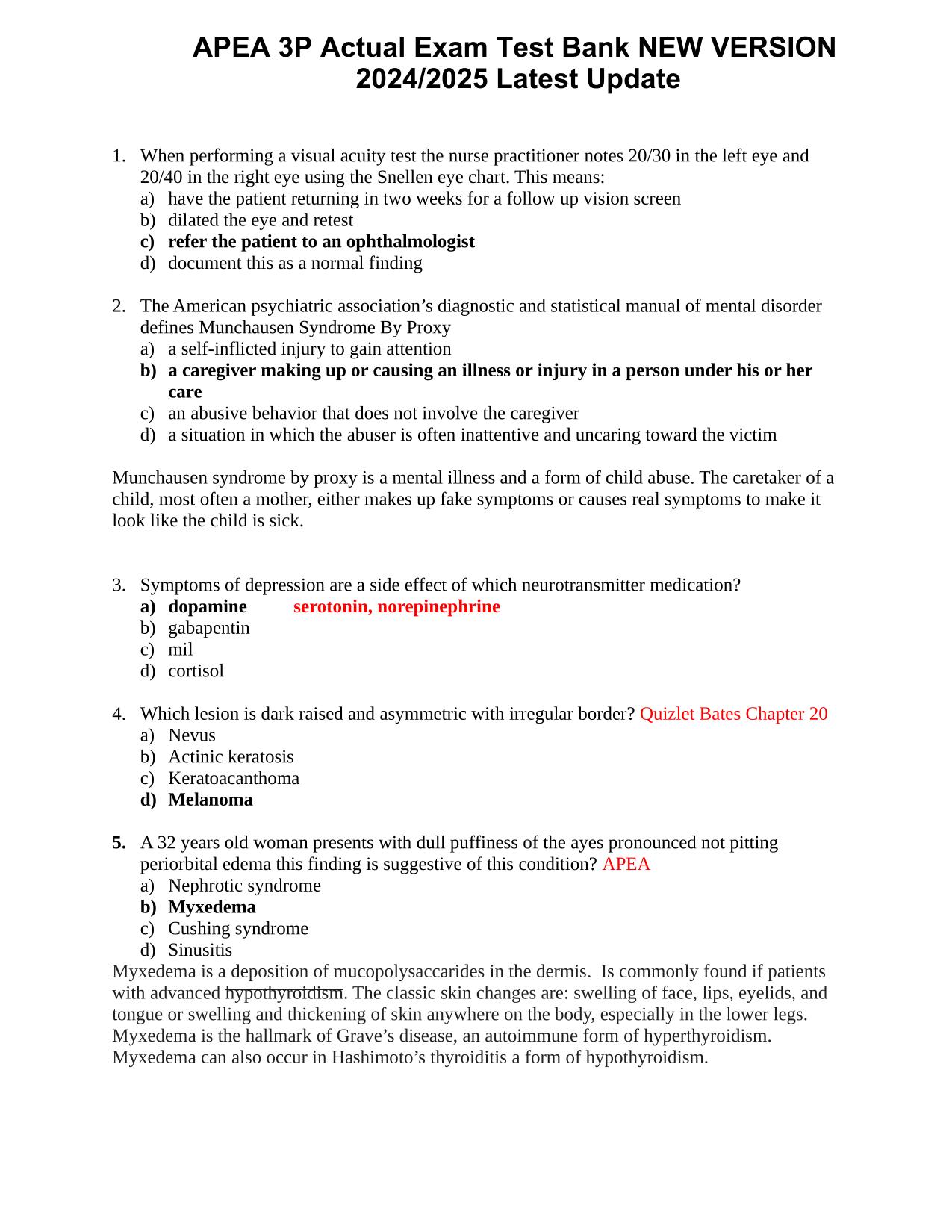APEA Predictor Exam Q&A Latest Update 2025/2026
Course:
APEA
Institution:
APEA
APEA Rationale Pre-Predictor (Predictor) Exam Q&A Latest Update 2025/2026
After purchase, you get:
✅ Instant PDF Download
✅ Verified answer explanations
✅ Refund if not Satisfied
✅ Prepared for 2025/2026 test cycle
Document Information
| Uploaded on: | April 19, 2025 |
| Last updated: | June 12, 2025 |
| Number of pages: | 91 |
| Written in: | 2025/2026 |
| Type: | Exam (elaborations) |
| Contains: | Questions & Answers |
| Tags: | APEA Rationale Pre-Predictor (Predictor) Exam Q&A Latest Update 2025/2026 |
Seller Information

AdelineJean
User Reviews (0)
Exam (Elaborations)
$11.50
Bundle Deal! Get all 2 docs for just $14.99
Add to Cart
100% satisfaction guarantee
Refund Upon dissatisfaction
Immediately available after purchase
Available in Both online and PDF
$11.50
| 0 sold
Discover More resources
Available in a Bundle
Content Preview
82 Pages APEA Predictor Exam – Questions and Correct Answers | Rationale Pre-Predictor 2025/2026 NEWEST VERSION HIGHEST SCORE| PDF DOWNLOAD 1) A 15 years old high school student with a mild sore throat and low-grade fever that has persisted for about 3 weeks. She reports general malaise, fatigue, and loss of appetite. The NP suspects mononucleosis. Which of the following is the LEAST appropriate intervention? a. Palpate the lymph nodes and spleen b. Examine the posterior oropharynx for petechiae c. Obtain a CBC, throat culture, and heterophil antibody test. d. Obtain an urinalyses and serum for LFTs and amylase Explanation: mononucleosis is a symptomatic infection caused by the Epstein-Bar virus. Common is people 15-24 years of age. Common signs and symptoms following incubation period (1-2 months) include fatigue, chills, malaise, anorexia, white tonsillar exudates and lymphadenopathy or posterior cervical region. Splenomegaly can be present. A maculopapular or occasionally a petechial rash occurs in less than 15% of patients. A diagnosis is usually made using the Monospot. In addition, neutropenia and lymphocytosis are usually detected in the CBC. 2) A 32 years old male patient complaint of urinary frequency and burning on urination for 3 days. Urinalyses reveals bacteriuria and positive nitrites. He denies any past hx. Of urinary tract infections. The initial treatment should be: a. trimethoprim-sulfamethoxazole (Bactrim, Sulfatrim) for 7-10 day b. ciprofloxacin (Cipro) for 3-5 days c. Trimethoprim-Sulfamethoxazole for 3 days d. 750 mg ciprofloxacin as a one-time dose Explanation: trimethoprim-sulfamethoxazole (TMPS) is usually n appropriate medication to treat urinary tract infections in most patients. In the case of community resistance to TMPS >20%^, another medication should be substituted. In men, the appropriate length of time is 710 days. Women may be treated for 3 days for uncomplicated UTI 3) a. b. c. Which agent is most effective for the treatment of nodulocystic acne? Benzoyl peroxide (Benzac) Retinoic acid (Retin A) Topical tetracycline



